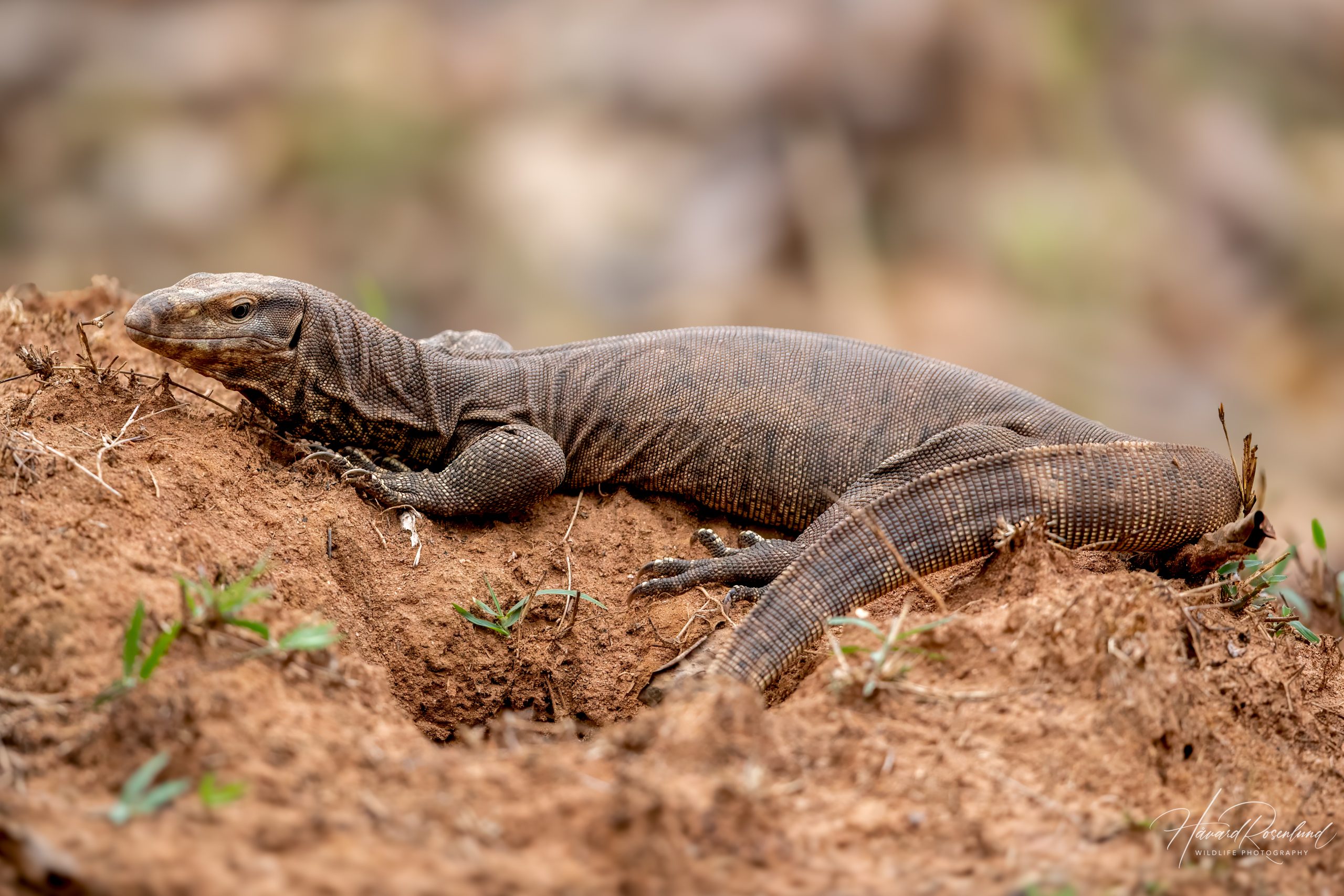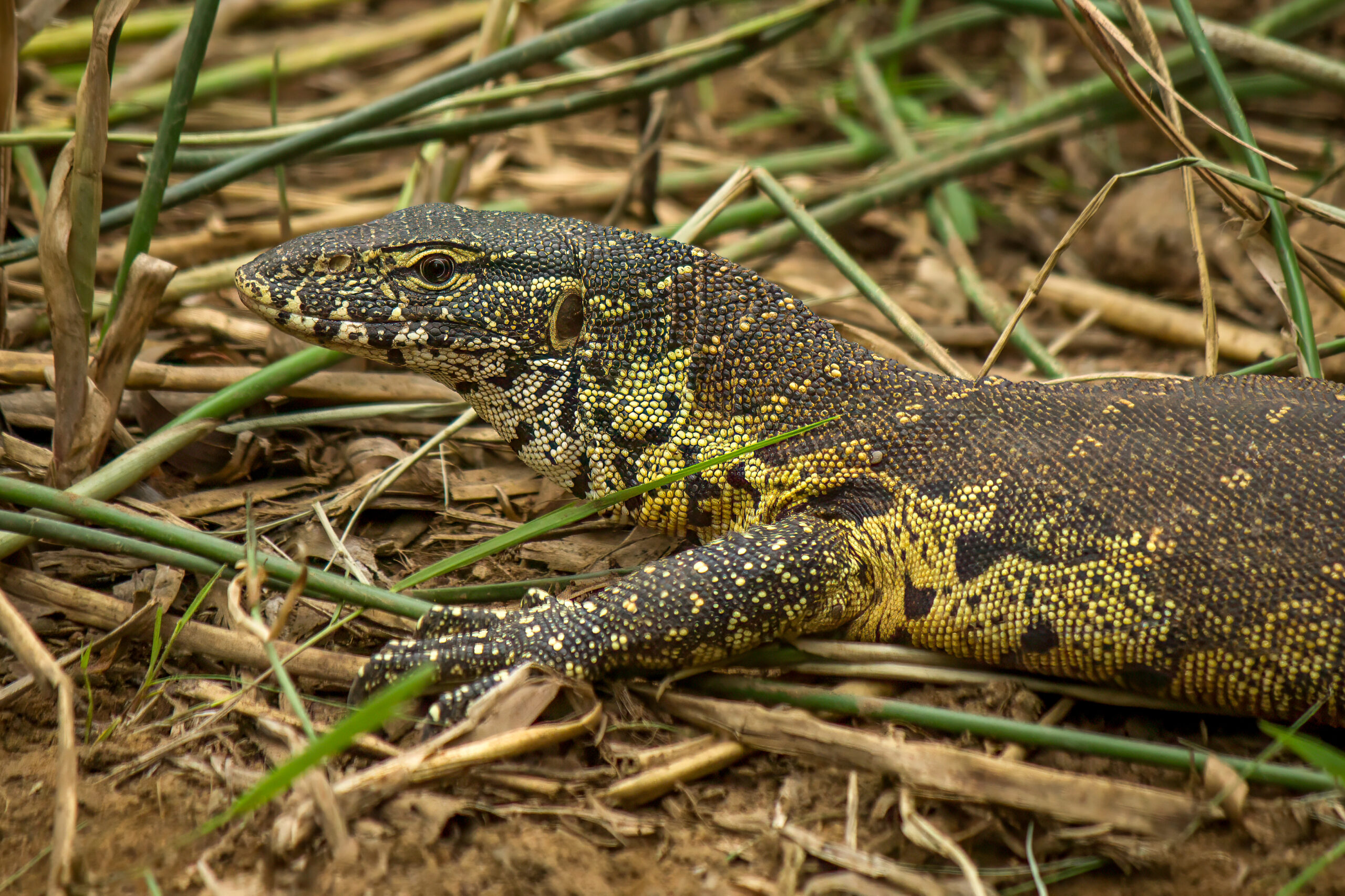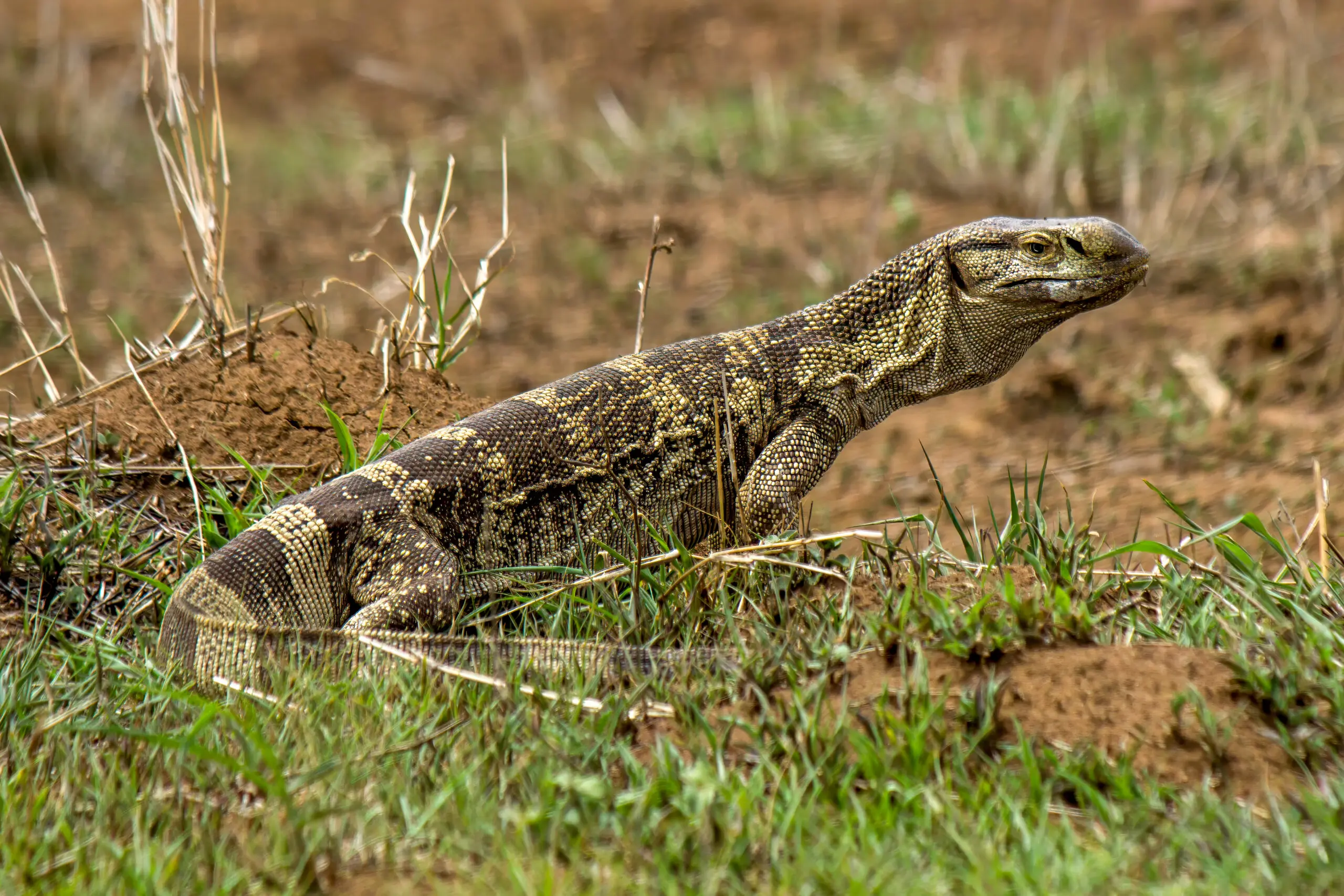Description
The Bengal monitor (Varanus bengalensis) is a large lizard native to South Asia, including countries such as India, Sri Lanka, Pakistan, Nepal, and Bangladesh. It has a robust body with a relatively long tail, and can grow up to a total 175 cm (69 in) in length, with males generally being larger than females. The coloration of the Bengal monitor is typically grey or brown with darker crossbands, which help it blend into its environment. One characteristic feature is its strong, clawed limbs adapted for digging and climbing.
The Bengal monitor was previously considered conspecific with the clouded monitor (Varanus nebulosus), found further east in Southeast Asia, but they have been separated based on distinct morphological differences and the fact that they do not seem to hybridize where their range overlap in Myanmar. The clouded monitor does differ somewhat in coloration, it has larger scales above the eyes, and it is more arboreal than the Bengal monitor.
Diet & Habitat
Bengal monitors are highly adaptable and can be found in a variety of habitats, including forests, grasslands, agricultural areas, and urban environments. They prefer areas with ample cover and access to water. As opportunistic carnivores, their diet is diverse and includes insects, smaller reptiles, birds, eggs, and mammals. They are also known to scavenge carrion. Bengal monitors employ both ambush and active foraging strategies, using their keen sense of smell to locate prey. Their strong jaws and sharp teeth allow them to tackle a wide range of food items, and they are known to be efficient hunters.
Behavior
Bengal monitors are primarily solitary creatures and are most active during the day. They are often seen basking in the sun to regulate their body temperature. When threatened, they can be quite aggressive, using their powerful tails as whips and their sharp claws to defend themselves.
These lizards are excellent climbers and swimmers, which aids in both escaping predators and hunting. They communicate through body language and, less frequently, through vocalizations. During the breeding season, males may engage in combat to establish dominance and gain access to females.
Reproduction
The breeding season for Bengal monitors typically occurs during the warmer months, from May to August. Males engage in courtship displays and physical contests to win over females. Once mating occurs, females lay a clutch of eggs, which can number from 20 to 40, in a burrow or hidden nest site. The incubation period for the eggs ranges from 6 to 8 months, depending on environmental conditions. The female may guard the nest for a short period, but there is no significant parental care after the eggs are laid. Hatchlings are independent from birth and must fend for themselves. Bengal monitors have a relatively long lifespan, living up to 10-15 years in the wild, and even longer in captivity.
Status
The Bengal monitor is currently listed as near threatened on the IUCN Red List. It is believed to have been declining significantly in numbers and the greatest threat is hunting for its skin and meat. It also faces threats from habitat destruction and capture for the pet trade. Conservation efforts should focus on the extent of illegal hunting and its impact on the population, as well as educating rural communities on the importance of protecting this species.






